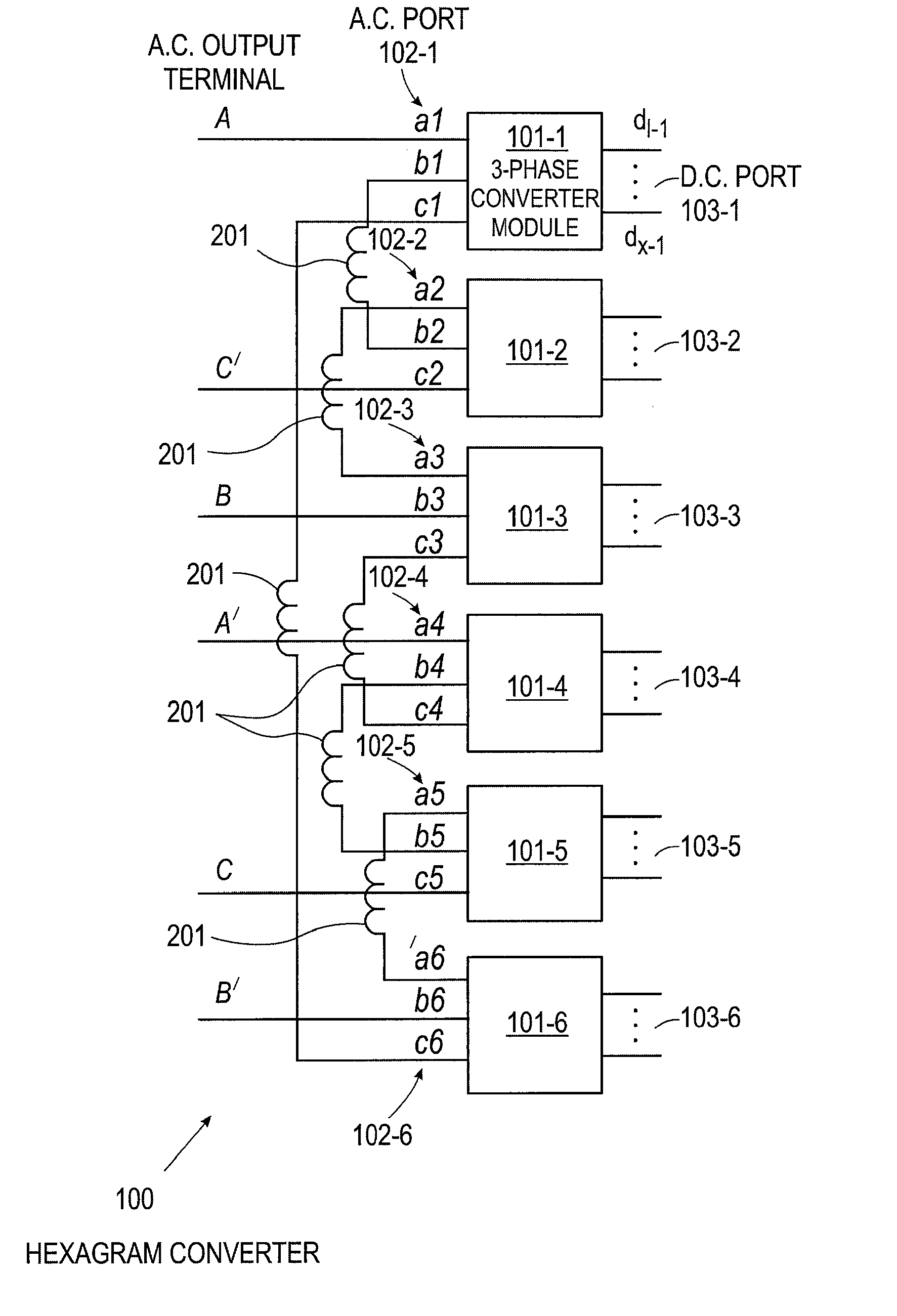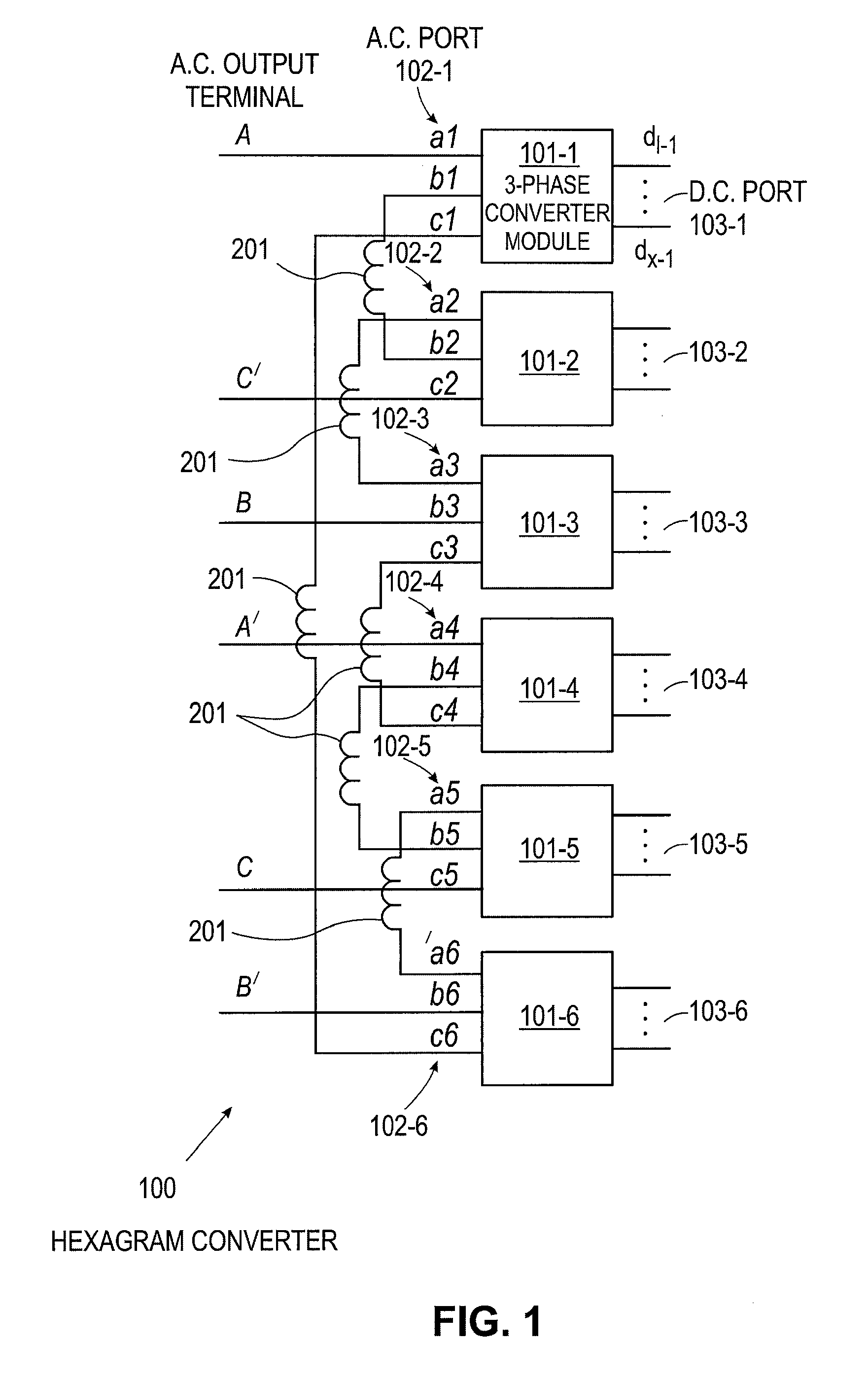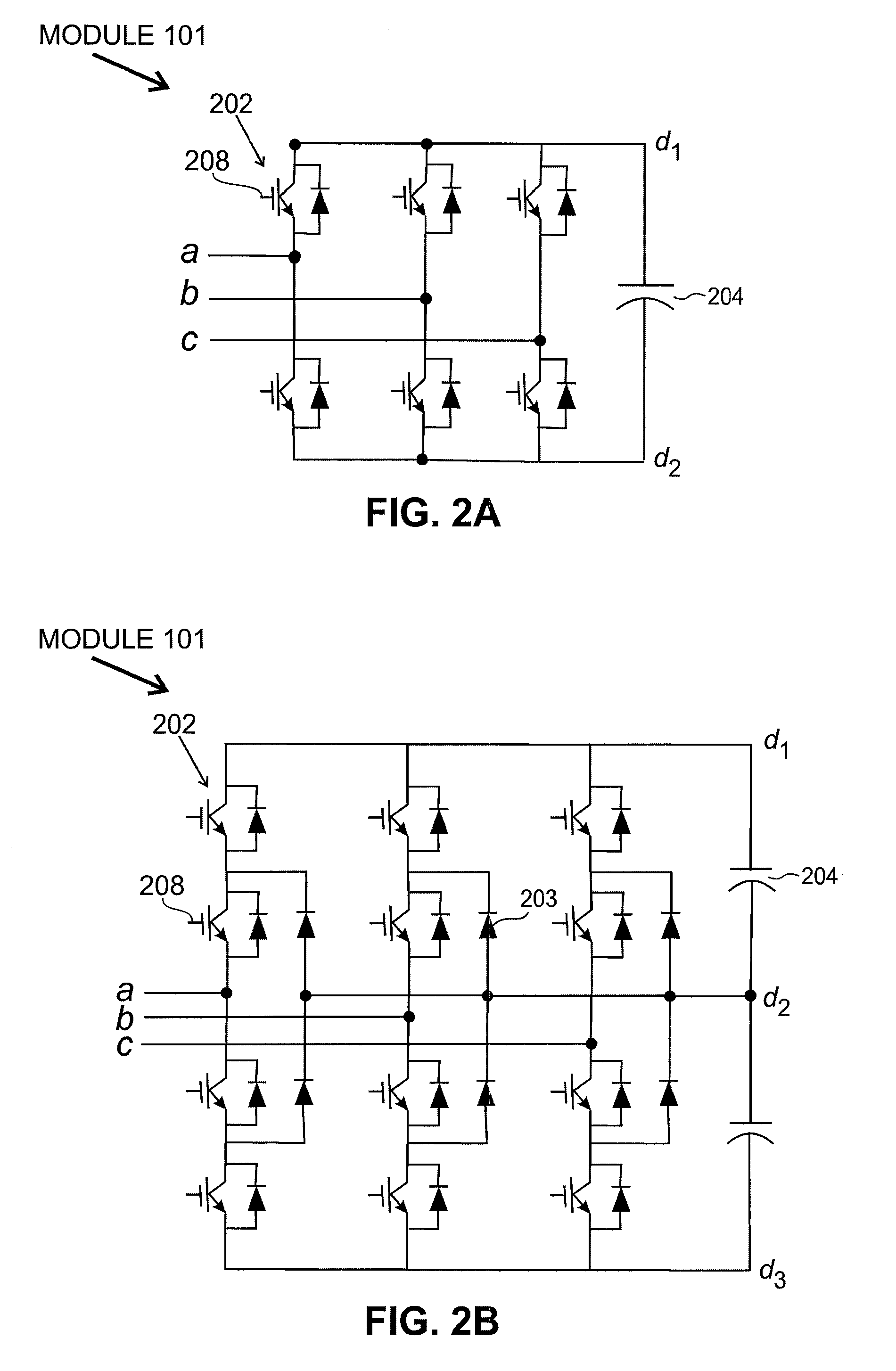Converters For High Power Applications
a converter and high-power technology, applied in the direction of dc-ac conversion without reversal, dc source parallel operation, transportation and packaging, etc., can solve the problems of limited number of levels achievable, high manufacturing cost, and unproven solutions that allow connection to high-power grids
- Summary
- Abstract
- Description
- Claims
- Application Information
AI Technical Summary
Benefits of technology
Problems solved by technology
Method used
Image
Examples
Embodiment Construction
[0021] Provided herein are multiple exemplary embodiments of multilevel converters and methods for using the same. These converters can be used in a wide variety of applications, certain examples of which will also be described herein. These multilevel converters provide significant advantages over conventional converters including, but not limited to, a more modular structure, lower component counts, automatic balance, relatively easier control and greater built-in fault redundancy.
[0022]FIG. 1 is a schematic view depicting a first exemplary embodiment of multilevel converter 100, which, for ease of discussion, will be referred to herein in a non-limiting manner as hexagram converter 100. Hexagram converter 100 preferably includes six three-phase converter modules 101. Converter 100 can be configured such that each module 101 lies in a main power path and consumes one-sixth of the converter 100's output power. In some cases, when multiple versions of a similar component or structu...
PUM
 Login to View More
Login to View More Abstract
Description
Claims
Application Information
 Login to View More
Login to View More - R&D
- Intellectual Property
- Life Sciences
- Materials
- Tech Scout
- Unparalleled Data Quality
- Higher Quality Content
- 60% Fewer Hallucinations
Browse by: Latest US Patents, China's latest patents, Technical Efficacy Thesaurus, Application Domain, Technology Topic, Popular Technical Reports.
© 2025 PatSnap. All rights reserved.Legal|Privacy policy|Modern Slavery Act Transparency Statement|Sitemap|About US| Contact US: help@patsnap.com



